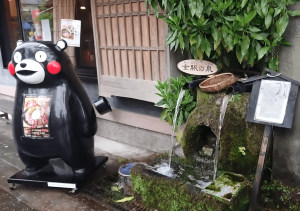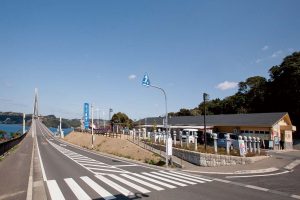2,000 years of history, a trip to the old city of Hakata
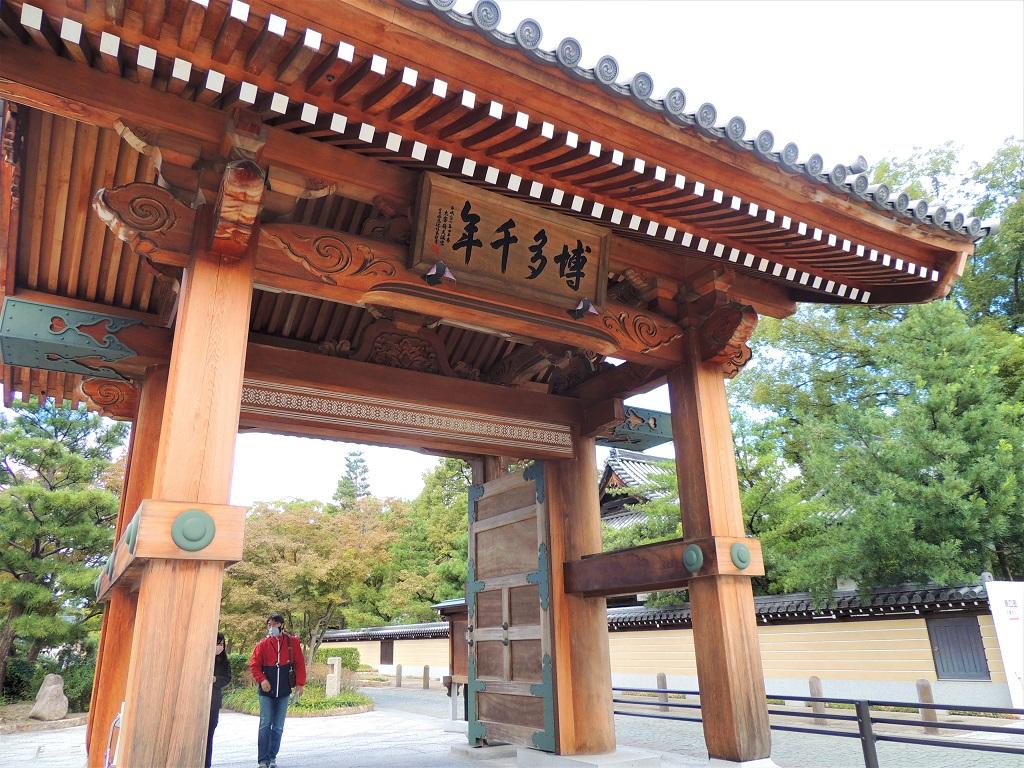
A trading city dreamed up by Taira no Kiyomori, a temple town where Kukai and others prayed, Japan's first Chinatown, and a merchant town rebuilt by Hideyoshi...the old town of Hakata is a condensed history of Japan!
Old Hakata, the birthplace of Zen Buddhism culture
Visit a treasure trove of history and culture
Hakata is one of Japan's oldest harbors, and Taira no Kiyomori, who dreamed of a free trade city, named the area "Sode no Minato" ("Minato of Sleeves") because the topography of Hakata's harbor town at the time was shaped like a sleeve. The part of the city that corresponds to the sleeve shape is today's "Hakata Old Town. It is the area centered on Ohaku-dori Street from Hakata Station, sandwiched between the Mikasa River and the Hakata River. The area is lined with business buildings, but the first Zen temple in Japan, Seifukuji Temple, stands in the background, surprisingly different from the rest of the city. Yes, the history of Japan's first temple is still alive behind the buildings in this area.
Hakata Sen-nen-nen-mon Gate" stands at the entrance of Jotenji Street and is the welcome gate to the old city of Hakata. This gate is named after the Tsujino-doguchimon, an entrance to the Dazaifu Government Office, which was located here in the Edo period. Start from here.
Jotenji Temple is the birthplace of Hakata culture!
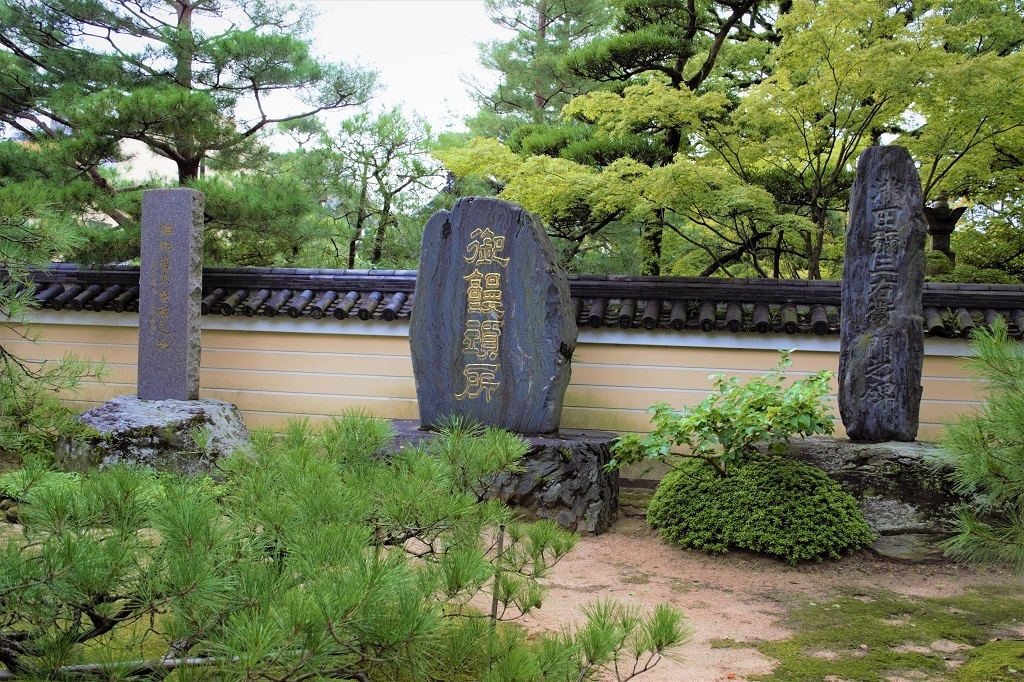
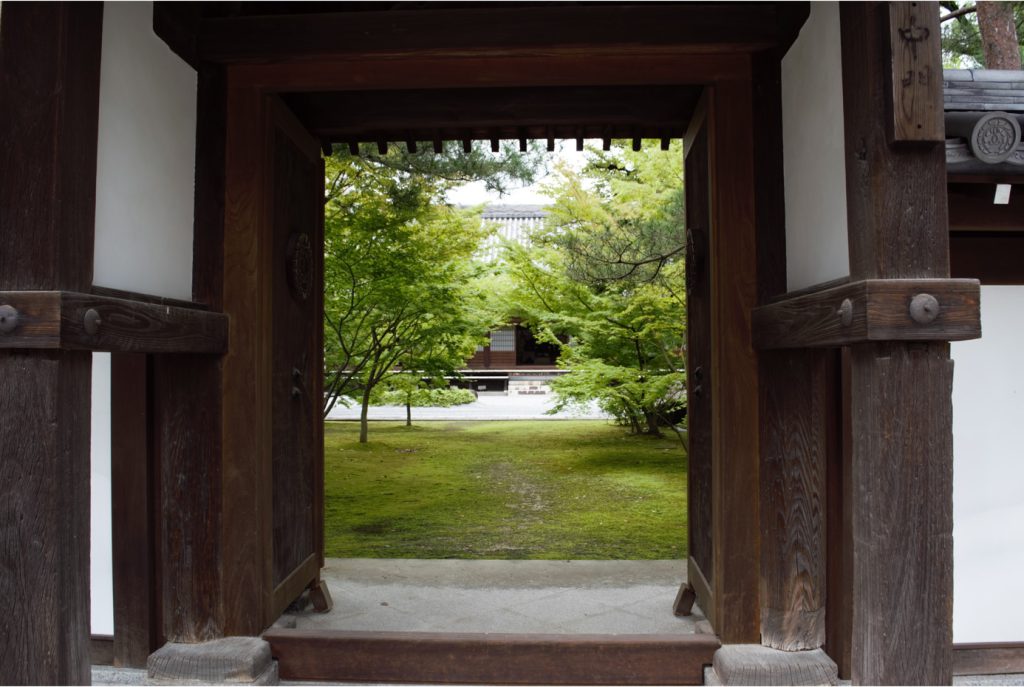
Jotenji Temple was founded in 1242 during the Kamakura Period by Ennin, or Shoichi Kokushi, a Zen master who had practiced Zen in China. He brought from China the technology of milling steamed buns, udon and buckwheat noodles, and is regarded as the birthplace of these products. The origin of the Hakata Gion Yamakasa festival is said to be the sprinkling of prayer water from the altar to pray for the repelling of plague and disease. Mitsuda Yazaemon, who returned to Japan with Seiichi Kokushi, spread the art of weaving and gave birth to Hakata textiles. It is also said that "New Year's Eve soba" originated when trader Shakomei Hsieh, who financially supported Jotenji Temple, served soba noodles to people suffering from famine on New Year's Eve. This temple is the birthplace of Hakata culture and of the Japanese custom of New Year's Eve soba.
Now, the stone garden "Sento Garden" in the Hojo of Jotenji Temple is not open to the public, but can be visited with a guide. The other side of the garden is likened to the Chinese continent and represents the story of Seiichi Kokushi's return to Hakata after crossing the Genkai Sea.
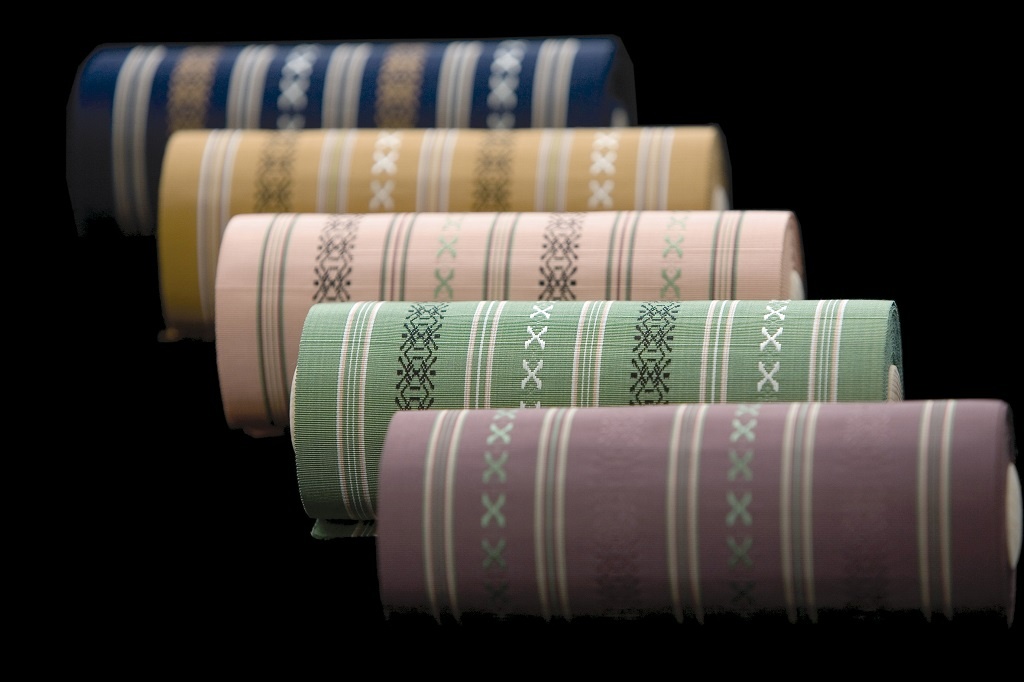
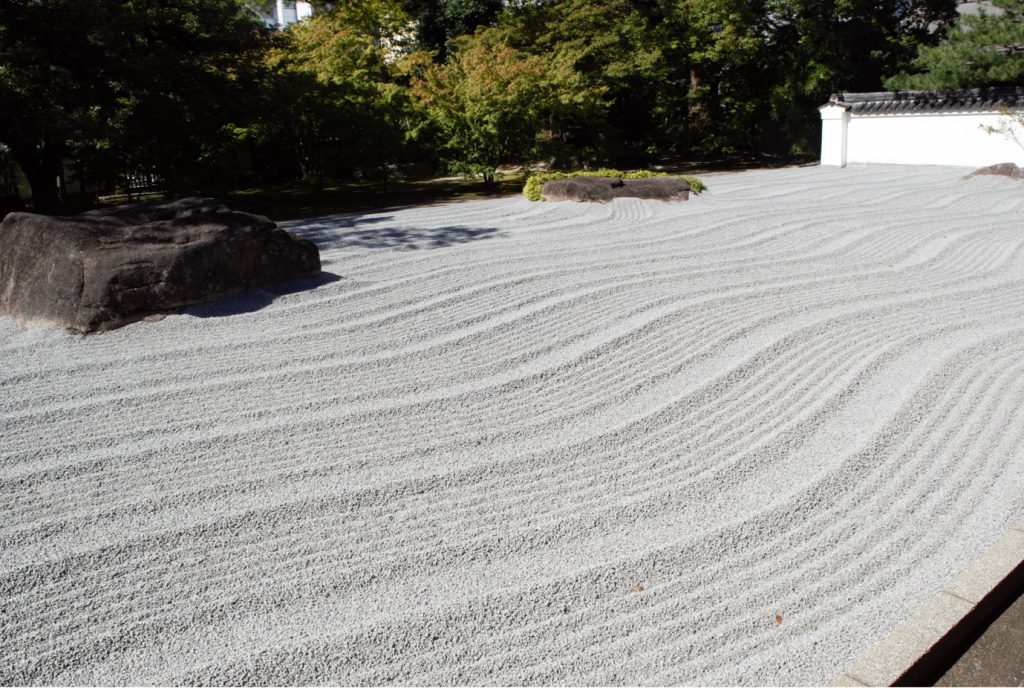
Important Cultural Property at Jotenji Temple to be Open to the Public for a Limited Time
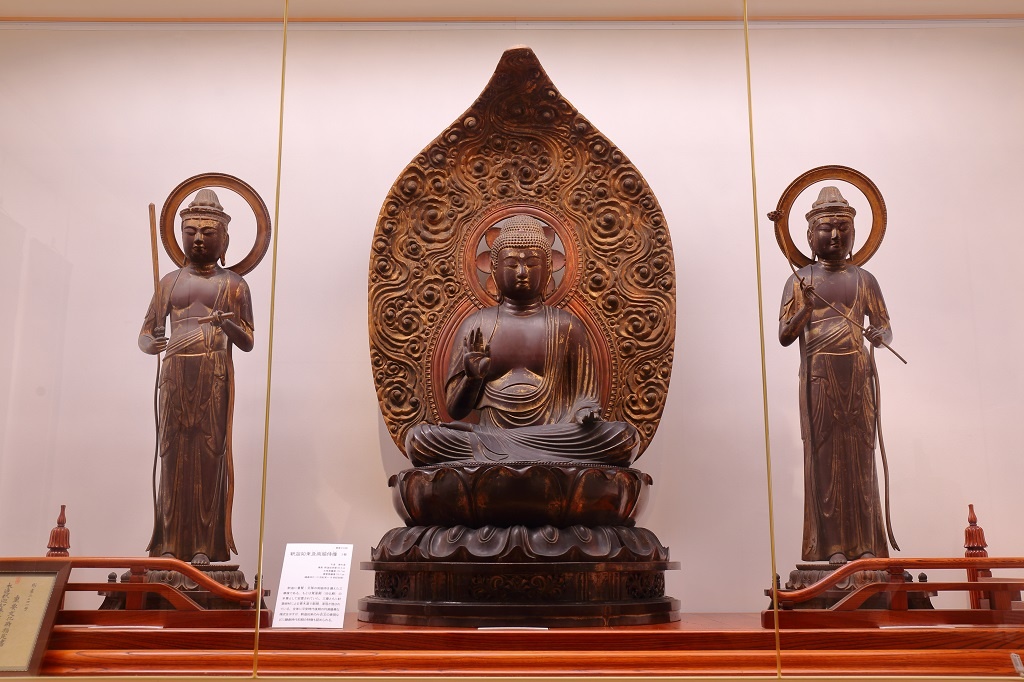
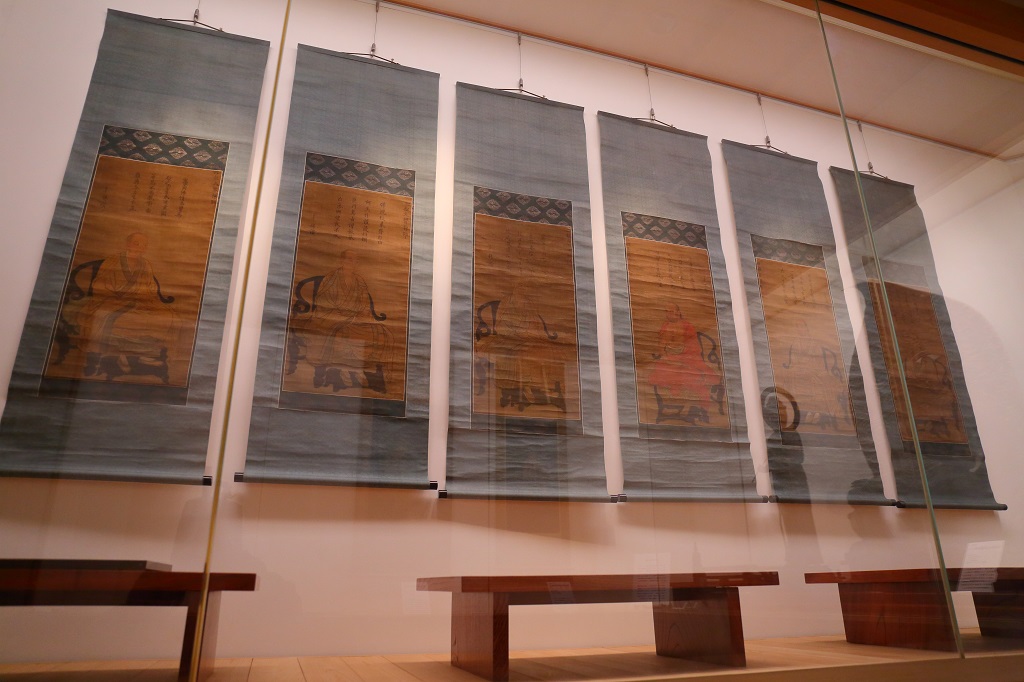
Tenji Temple has three nationally important cultural properties, which are stored in the temple's cultural asset storage facility, Enmyoukaku. They are "Wooden Shaka Nyorai and Ryowakijizo" from the Kamakura period, "Zenke Rokusozo" (six ancestral statues of Zen Buddhism painted on silk), and "Dosho" (bronze bell) from the Goryeo period of the Joseon Dynasty. Also stored in the same vault is a "Silk-colored image of Yangnyu Kannon Bosatsu (Buddhist Goddess of Mercy)," a Fukuoka City cultural property. Both statues are normally closed to the public, but are opened to the public twice a year for special events.
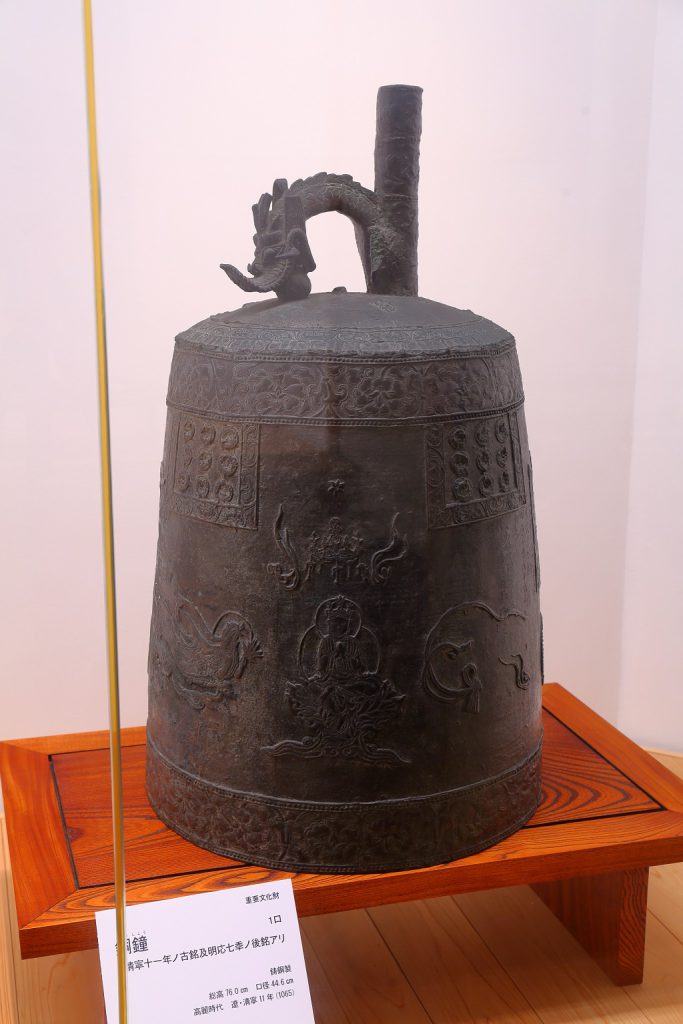
Visit Tenyoan, next to Jotenji Temple
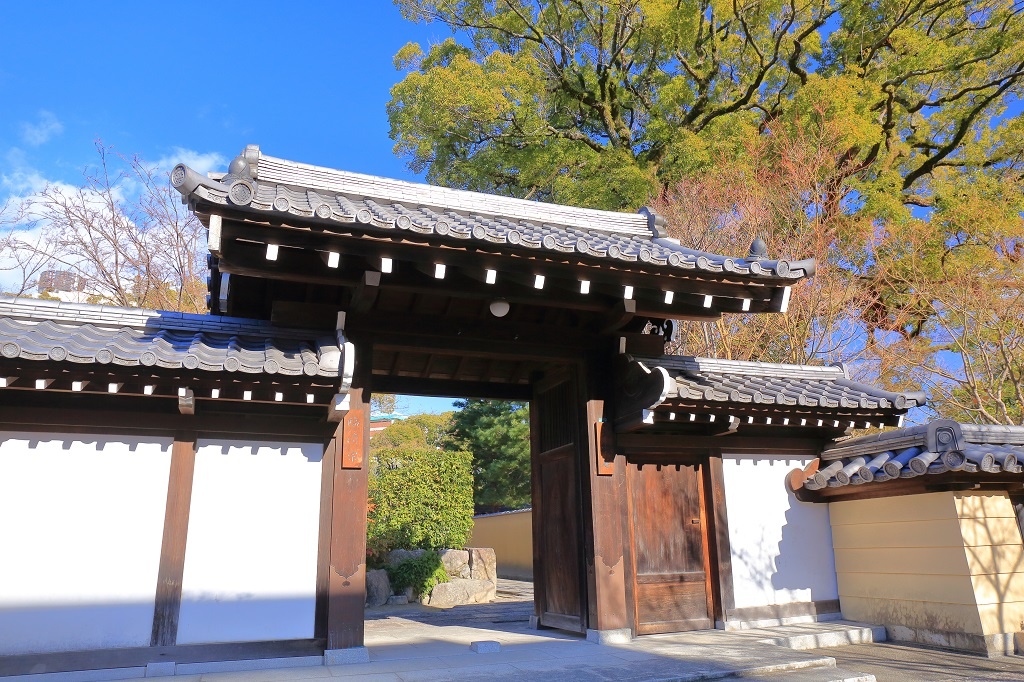
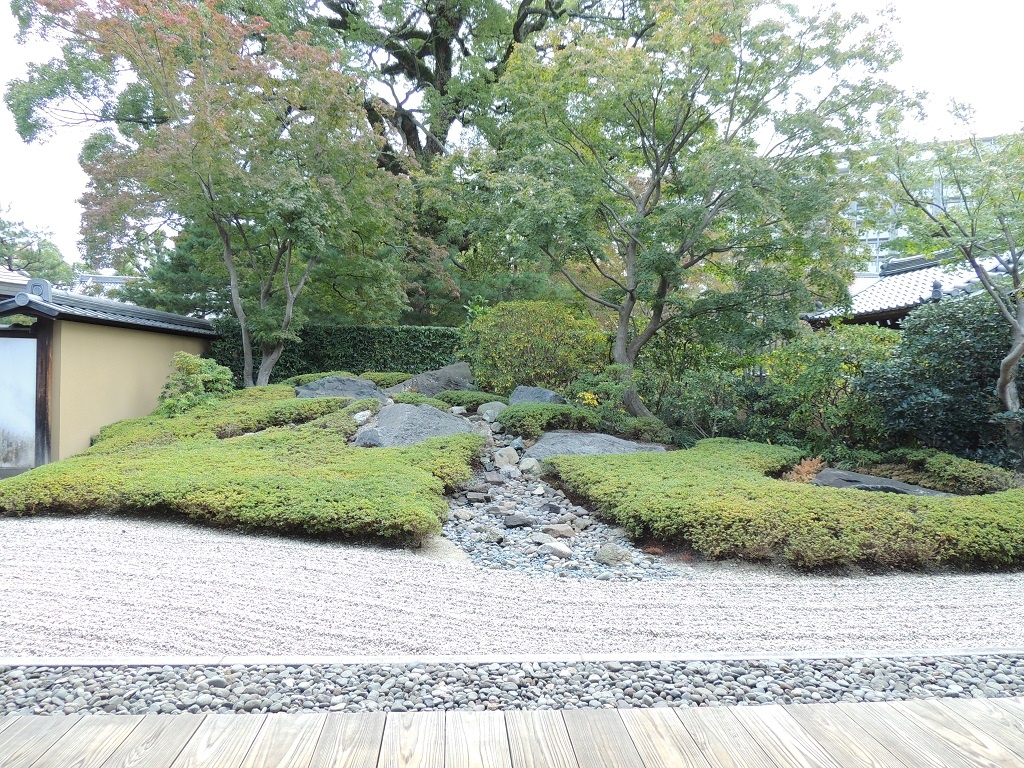
Tenyoan is a pagoda temple of Jotenji next to Jotenji Temple. It was founded in 1299 during the Kamakura period. In Zen Buddhism, after the death of a high priest of a large temple, his disciples built a small temple or annex on the temple grounds in memory of their master. This is called a pagoda temple. Jotenji once had 43 pagoda temples. The Seigen-tei garden at Tenyo-an is open to visitors during the daytime. However, it is not allowed to visit when there is a Buddhist memorial service at the temple. Of course, manners are strictly observed.
Enjoy gourmet food originated in connection with Jotenji Temple!
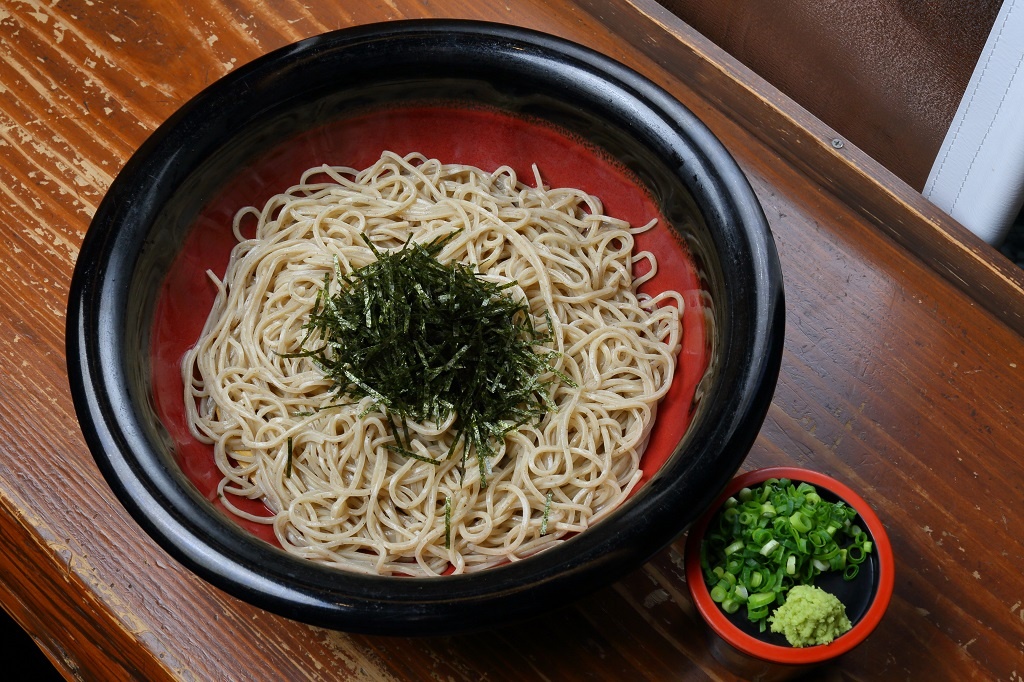
I want to try the udon and soba noodles that originated in Jotenji. Shungetsuan Jotenji-mae Branch is also located right next to Hakata Sennen-mon Gate. Hakata Chusei Udon, a revival of the udon associated with Jotenji Temple, is made with carefully selected Kyushu wheat flour and bran, and is full of dietary fiber. The noodles are thick and chunky. Soba noodles are made daily at the factory of the food company that runs the restaurant. The thin noodles are coarsely ground and have a strong aroma. ☎ 092-473-2911 Closed on Sundays and holidays, open until 15:30 on Saturdays.
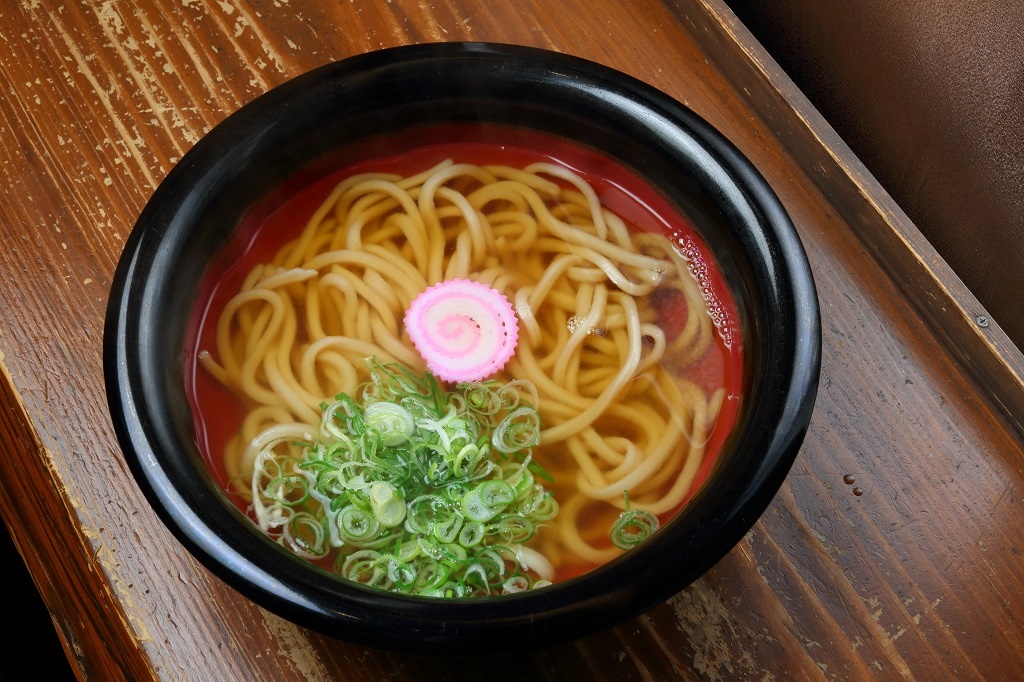
Hakata is the birthplace of Uiro!
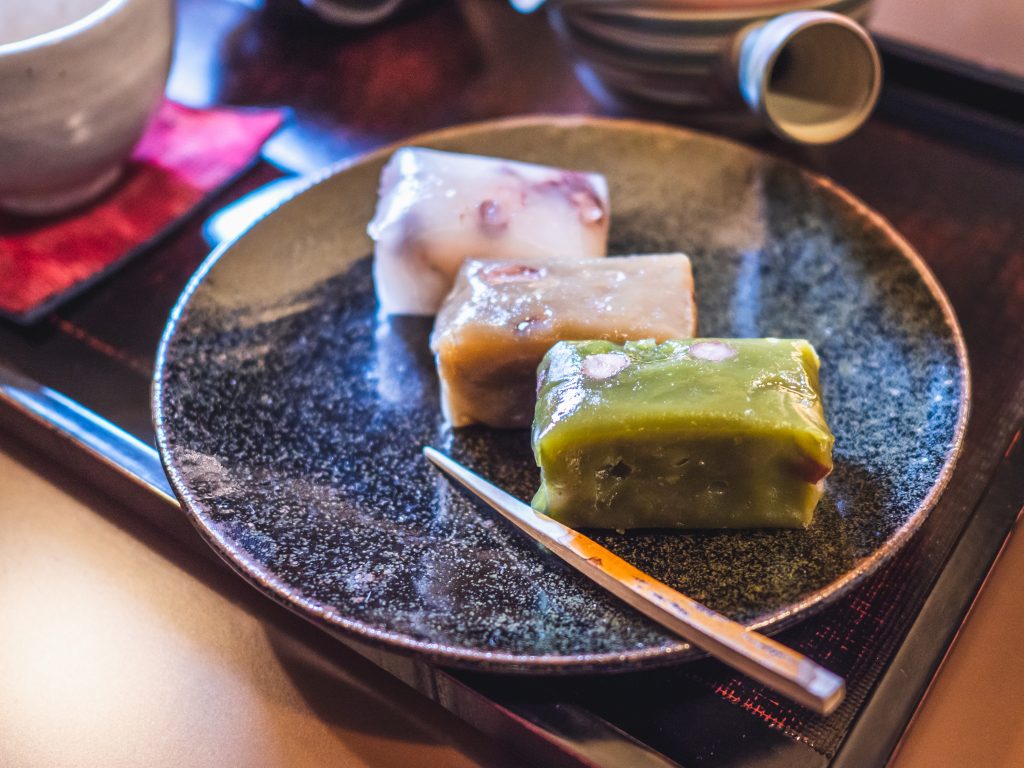
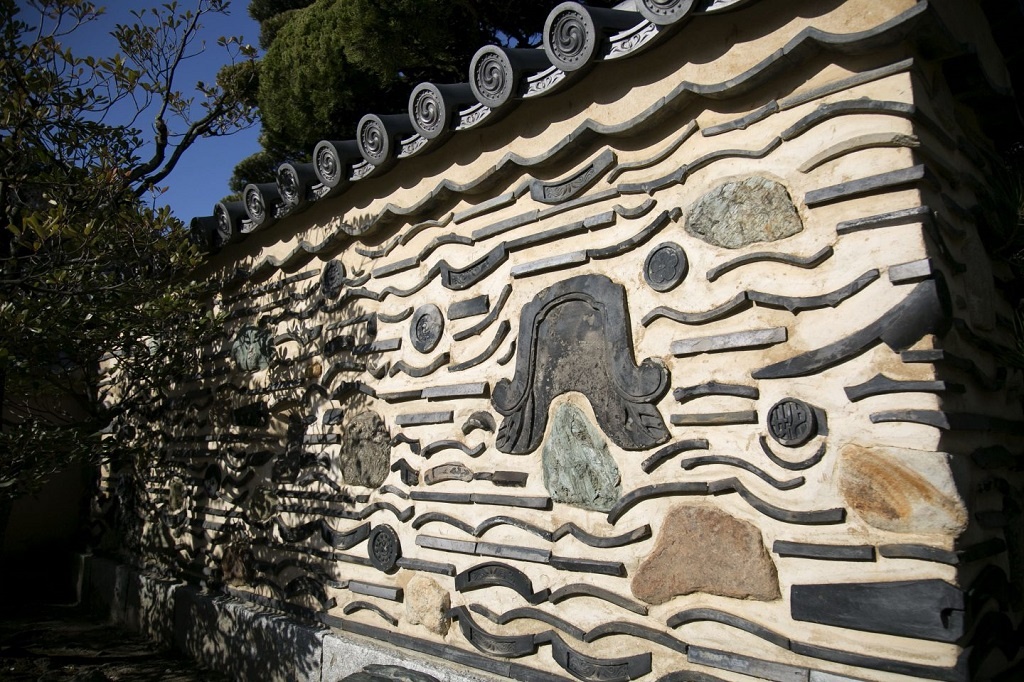
Another item that originated in the old city of Hakata is "Uiro," a type of sweet made of wheat flour. At Myorakuji Temple, a Zen sect temple, there is a stone monument that reads, "The place where Uiro was introduced to Japan," and it states that Uiro was introduced from China as a pill. Nagoya, Yamaguchi, and Nakatsu are famous for Uiroi, but the priests of Myorakuji Temple developed "Hakata Uiroi". It can be purchased at Kouan Seikasien Tea Shop and Hakata Machiya Furusato Kan, and can also be tasted at Nanafuku Tea House in the old town.
Tochoji Temple, Japan's oldest esoteric Buddhist temple by Kobo Daishi
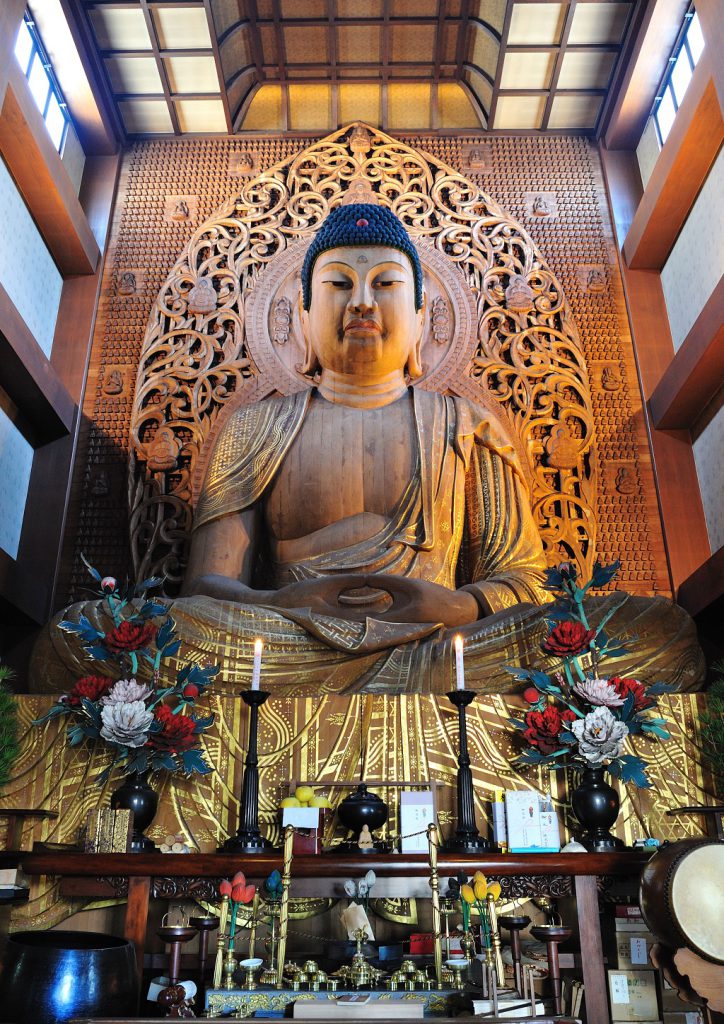
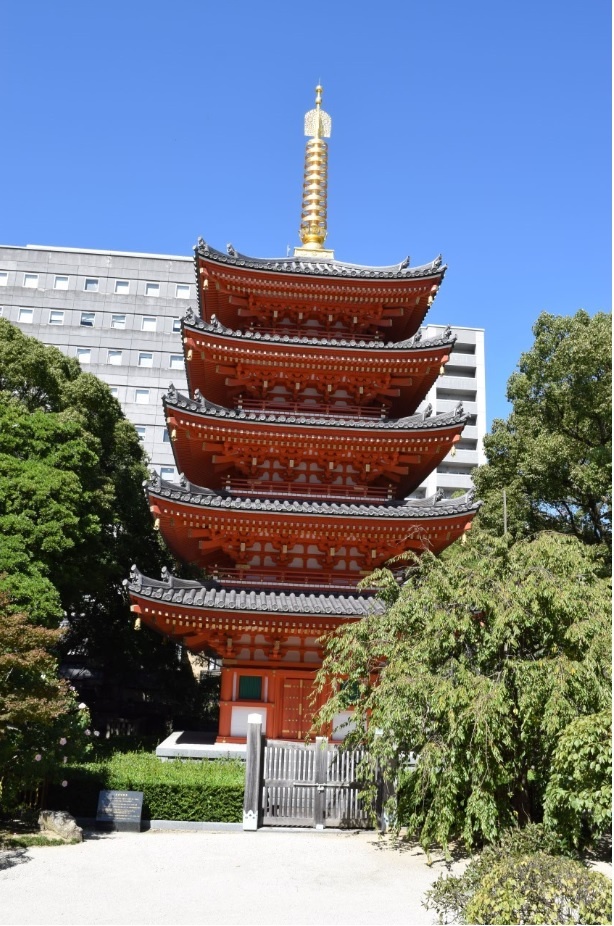
Tochoji Temple is located along Ohaku-dori Street, right in front of Gion Subway Station, Exit 1. The temple was founded in 806 A.D. by Kobo Daishi Kukai as Japan's first Shingon esoteric Buddhism sacred site. It is the oldest temple in the old city of Hakata. The temple's treasure is the "Kobo Daishi Senji-bun" (Kobo Daishi's inscription in 1,000 characters), which belonged to Nobunaga Nobunaga and was brought out by Shimai Munemuro, a Hakata merchant who was present at the Honnoji Incident. (Not open to the public).
The Fukuoka Daibutsu, one of the largest seated wooden statues in Japan, is open to the public. Visitors are encouraged to experience the "Hell and Paradise Tour," which takes them behind the Daibutsu. It is quite thrilling to groping your way through the pitch-darkness. There is also a vermilion-lacquered five-story pagoda and the graveyard of the Kuroda family, the feudal lords of Fukuoka, within the precincts of the temple, which are worth seeing.
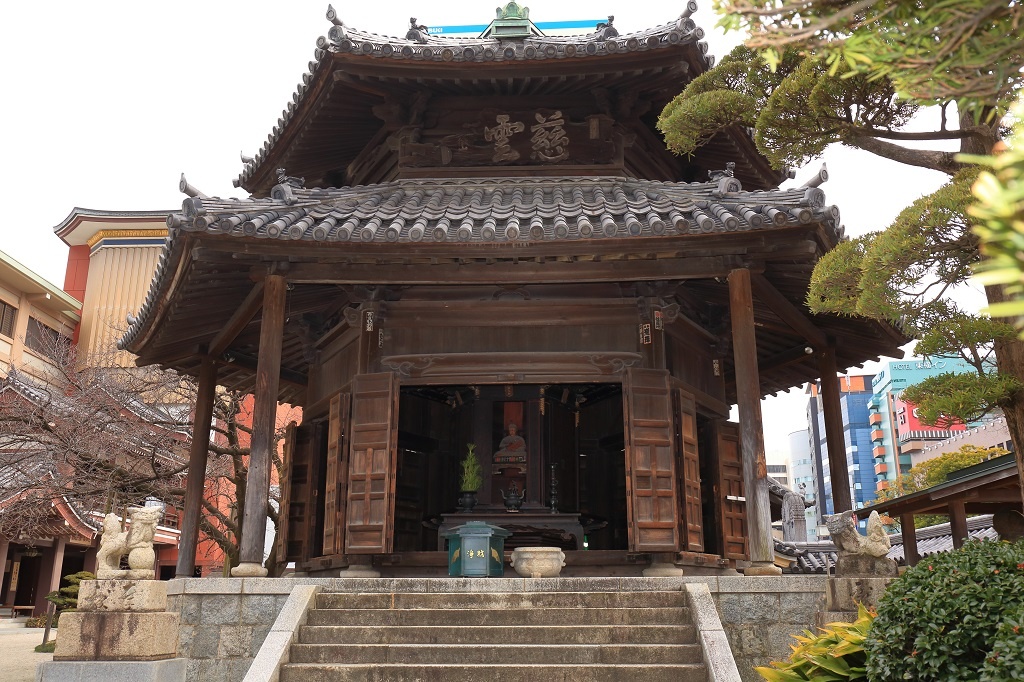
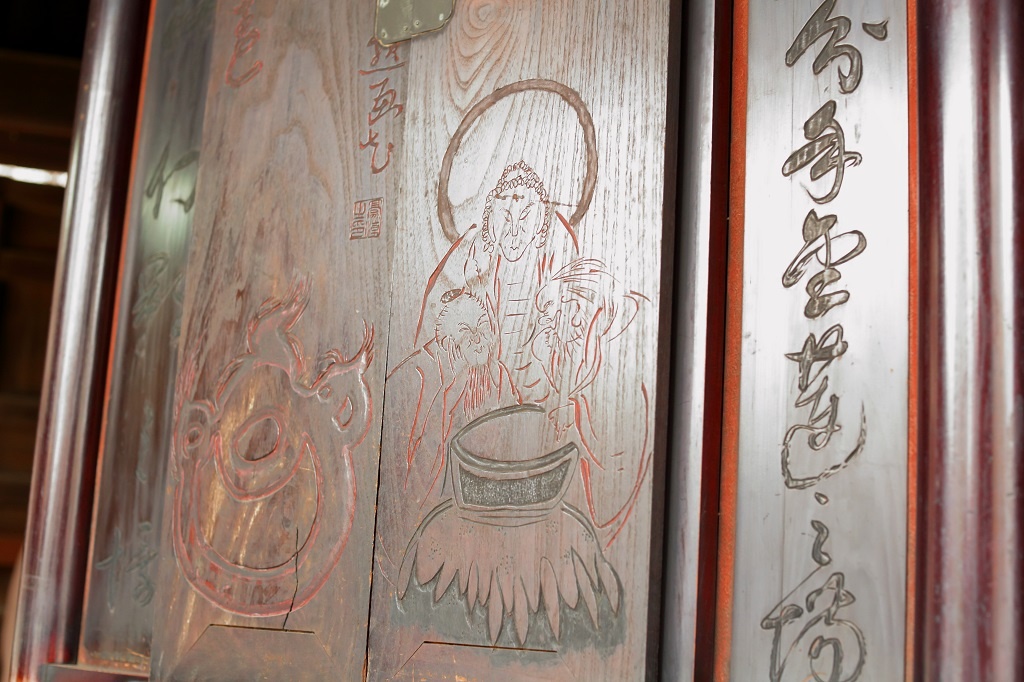
Another pride of Tochoji Temple is the "Rokkakudo" (a cultural asset of the city), which was built in the late Edo period and consists of a covered roof and a rotating Buddhist altar (butsugan*). Six Buddhist statues, including the principal image of Kobo Daishi, are enshrined in the hall, and calligraphy and paintings by literati of the time are engraved on the kitchen door of the pedestal on which each Buddha image is enshrined. Some of them are by Sengai, a famous monk of Seifukuji Temple. In addition to the 28th of every month, the temple is open five times a year on Setsubun Festival, Kobo Daishi's birthday (June 15), and the first day of the equinoxes. Incidentally, the "Standing Wooden Thousand-Armed Kannon" (an Important Cultural Property) is open to the public four times a year, on Setsubun Festival, Kobo Daishi's birthday, and on the equinoxes in spring and fall. ☎ 092-291-4459
A Buddhist niche is a small room where Buddhist statues, sutras, tablets, etc. are enshrined.
Are there any kumuso monks in Old Hakata?
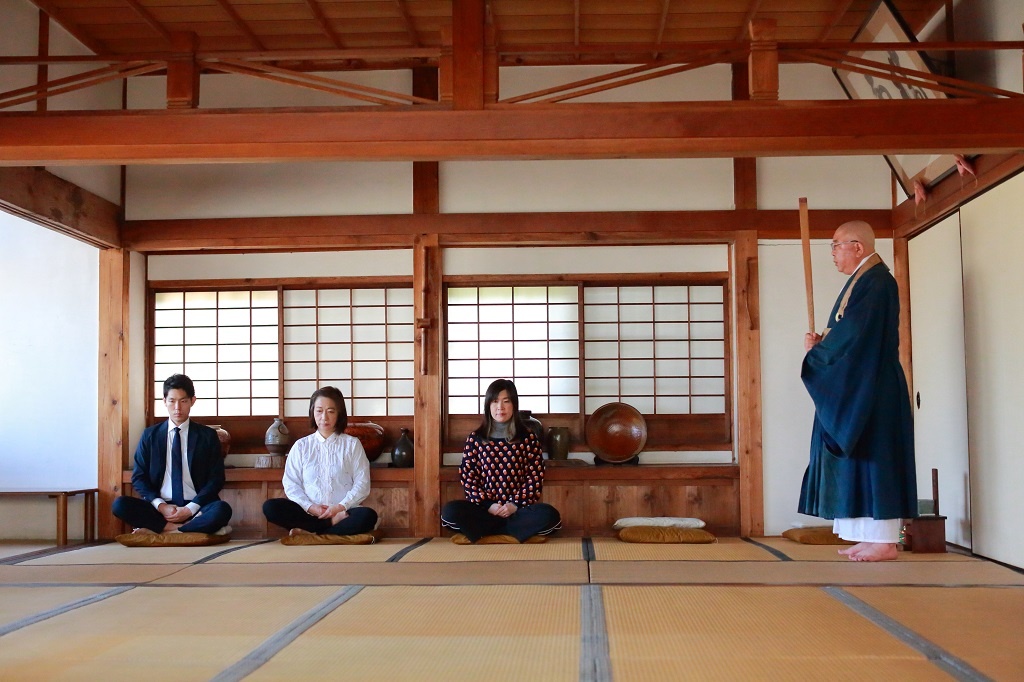
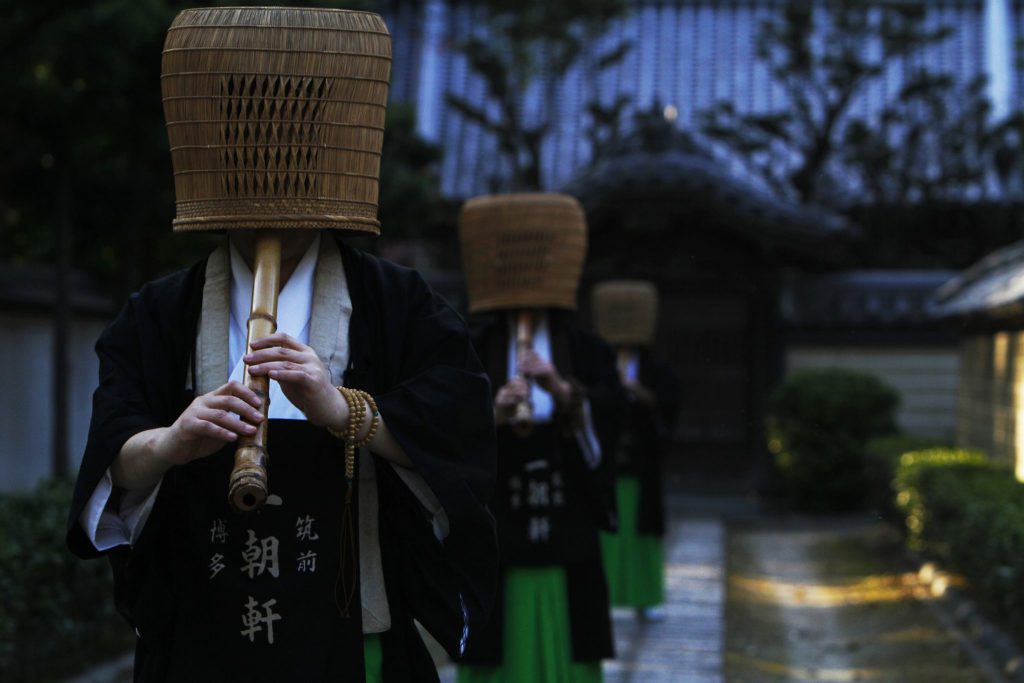
Saiko-ji Temple is one of the pagoda temples of Seifuku-ji Temple. In fact, this is the only temple in Kyushu and one of the few temples in Japan that has a shakuhachi that originated in Komusoji Temple. The origin of the komuso shakuhachi is said to be that the Fukka sect, a sect of Zen Buddhism, started playing the shakuhachi when they went begging for alms as part of their Zen training. The Fuhaku sect was abolished during the Meiji period (1868-1912), but the former abbot of Saiko-ji Temple reestablished the shakuhachi dojo in 1957. Even today, visitors can experience zazen meditation and learn to play the shakuhachi at the same time if they wish. The shakuhachi style of komuso, called hochiku, which has been handed down in the dojo's Isshoken building, is an intangible cultural asset of Fukuoka Prefecture.
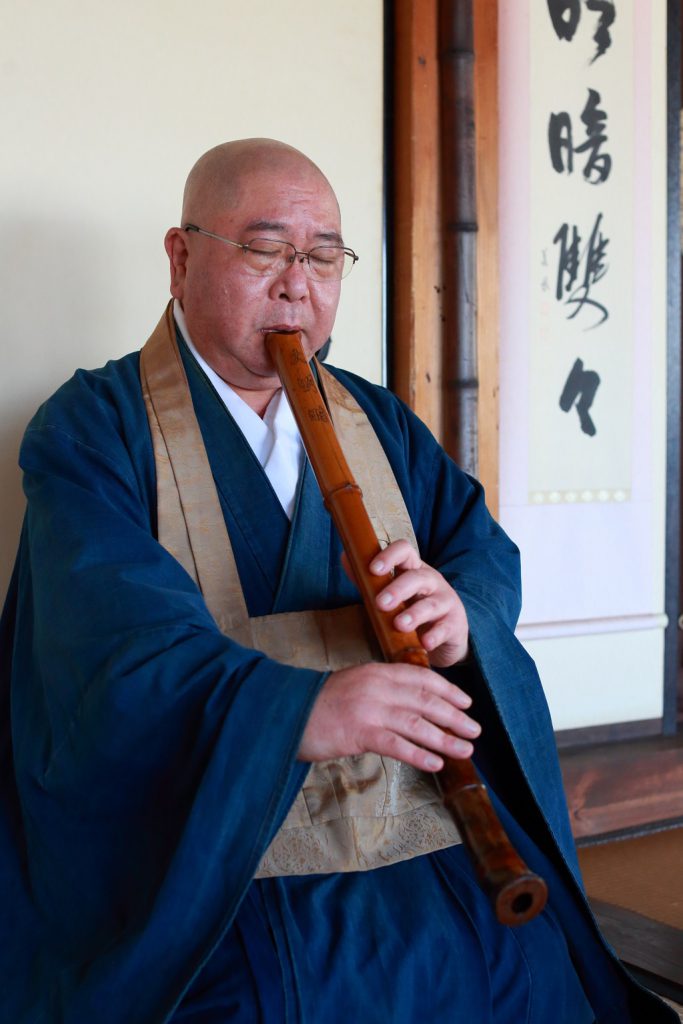
Is "wet clothes" originated in Hakata? Does "Rui-ba" like konnyaku?
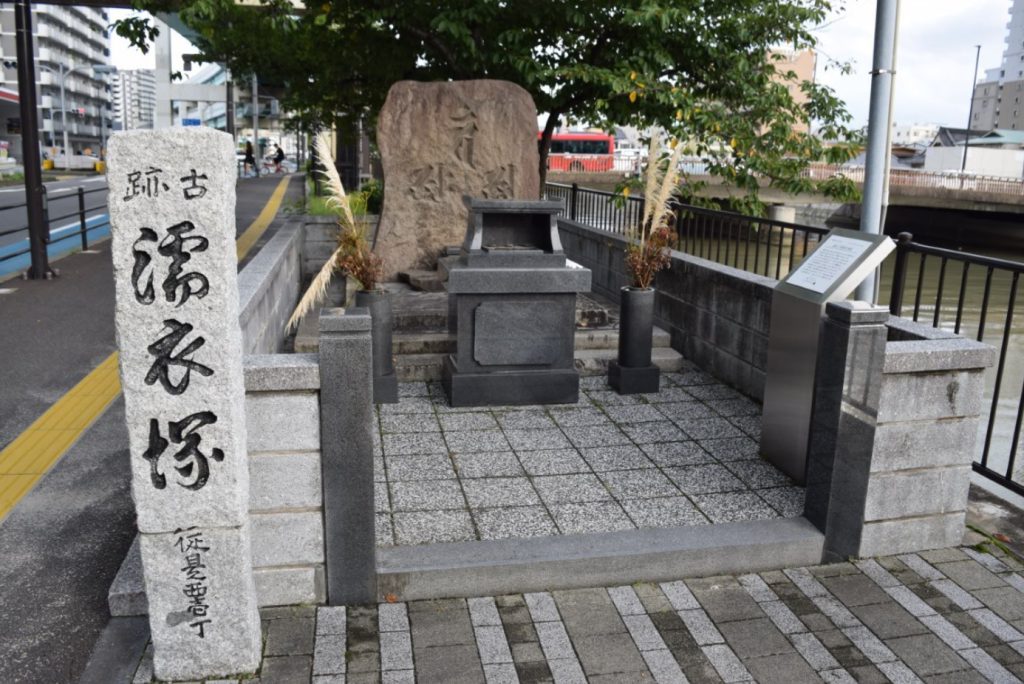
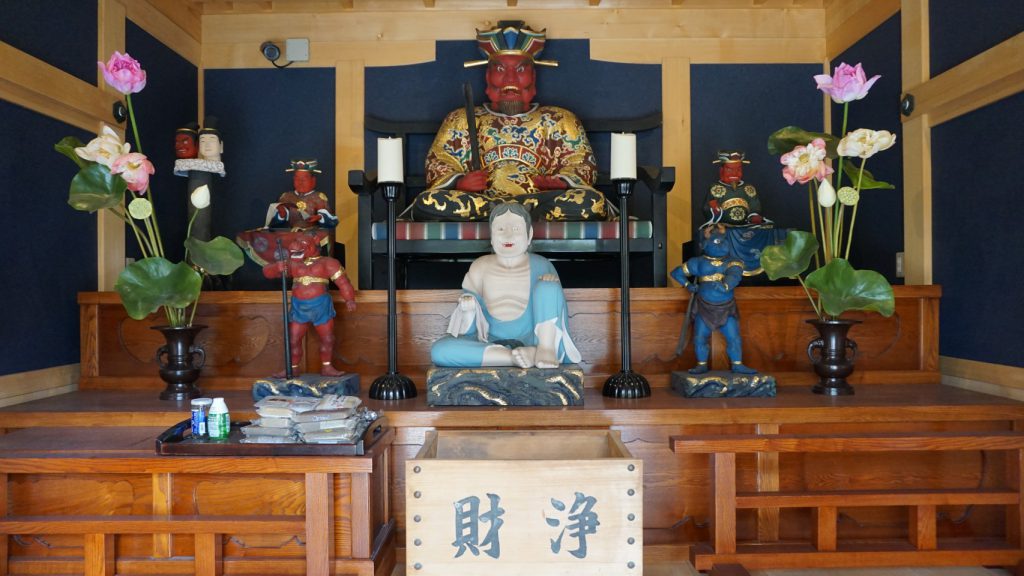
Now, we are almost at the end of our tour of old Hakata. Here is a little unexpected "origin story". The ancient site "Nuregoro-zuka" stands quietly by the side of Ishidobashi Bridge. According to legend, in the 8th century, Chikusei Sano was tricked by his future wife into believing that his daughter had stolen a fisherman's fishing robe and was causing trouble for the fisherman, and he slayed her as she slept after being forced to wear the wet robe. Since then, the term "wet clothes" has been used to describe an innocent crime. Incidentally, the Sanskrit script tablet monument "Sanskrit script tablet inscribed in Kouei 3" is a tangible cultural property of the prefecture.
Kaienji Temple of the Jodo sect near Nureigorizuka is a temple with a history of about 400 years. The "Enma Hall and Kannon Hall" at the entrance to the temple grounds has quite a pop atmosphere. In front of King Enma stands "Ruki-eba," a woman who takes away the clothes of the dead at the Sanzu River, and it is customary to offer konjac to Ruki-eba during the Enma Festival on August 16 and January 16, when konjac made of hardened lye is said to remove the evil of illness. The gacha of King Enma is also unique. The old town of Hakata is a deep and profound place. It is a treasure house of history, culture, and stories. Kaiyuanji Temple ☎092-291-4520
Hakata Old Town
| name | Gokusho-cho area, Hakata-ku, Fukuoka City, Fukuoka For more information on Old Hakata, please contact You can also visit the Fukuoka City Tourist Information Website (Yokanavi). |
|---|---|
| supplementary information | Related URL:. https://yokanavi.com/ |

